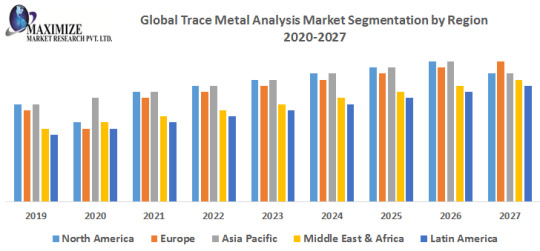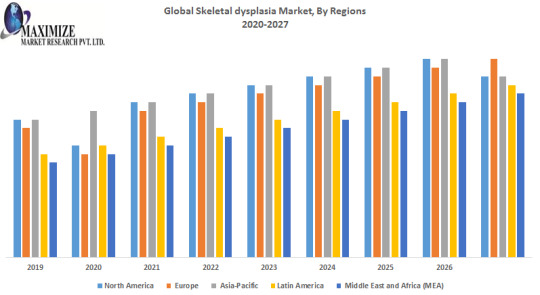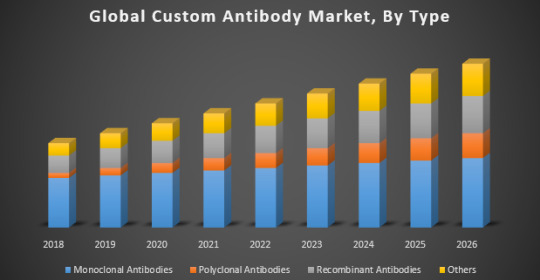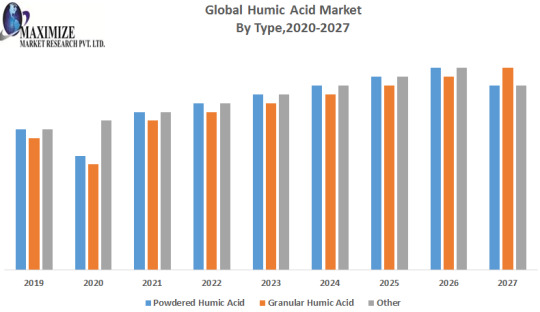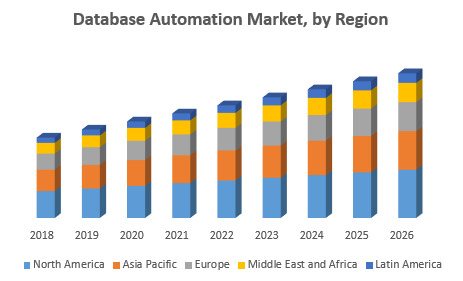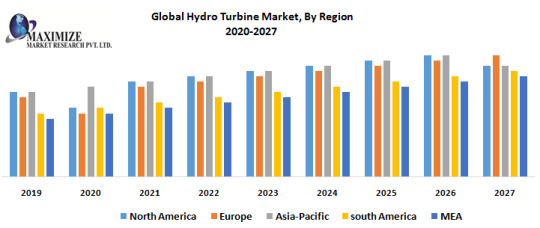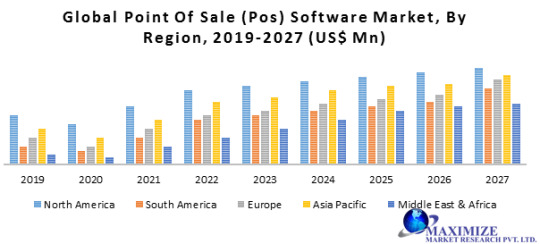Don't wanna be here? Send us removal request.
Text
Global Seed Treatment Chemicals Market : Industry Analysis and Forecast (2020-2027)
Global Seed Treatment Chemicals Market was valued US$ XXBn. in 2019 and is expected to grow US$ 5.89 Bn.by 2027, at a CAGR of XX% during the forecast period. The report study has analyzed revenue impact of COVID-19 pandemic on the sales revenue of market leaders, market followers and market disrupters in the report and same is reflected in our analysis. Market Overview: Seed treatment chemicals are insecticides that are applied to seeds for controlling the seeds & seedling diseases. They are utilized to control insect pests. These products are physical, chemical, and biological agents and also help in the annihilation of rodents and pests. It contains colorants, rodent & insect repellents, and special wetting agents. They are available in several kinds,like pesticides, fungicides, and bactericidesused for the treatment of seeds that protect seeds and improve crop harvesting. Market Dynamics: The product assists in the diagnosis and regulation of pre-season ailments and insect attacks on seeds. They are used for improving crop quality and vigor. These chemicals offer effective control against ground pests as well as diseases. Large-scale use of the product helps in the healthy crop yield and facilitates uniform seedling emergence together with minimizing the damage to seeds by either insects or diseases. All these above-mentioned factors are expected to steer the growth of seed treatment chemicals market across the globe. In addition to this, the rise in the acceptance of the product and increase in the awareness levels pertaining to breakthroughs observed in the seed treatment techniques are expected to raise the seed treatment chemicals market size in the years to come. Moreover, improvement in the seed treatment active ingredient quality, the introduction of new farming practices, huge plant growth, and enhancement in crops’ strain acceptance are few of the aspects that will spur the product demand over the expected timeline. On the other hand, the high cost related to seed treatment chemicals could challenge the market growth. Market Segmentation: By type, Biostimulant seed treatment chemicals offer naturally originating active ingredients that stimulate the physiological processes of crops. This encourages crop growth and high productivity. Biostimulant seed treatment chemicals encourage crop growth by improving the nutrients available in the soil. Metabolites and assorted natural ingredients in biostimulant seed treated products reduce biotic and abiotic stresses in crops occurring due to drought, salinity, and extreme temperatures. A paradigm shift in the utilization rate of biostimulant seed treatment chemicals over pesticide foliar sprays is expected to enhance the global seed treatment chemicals market. Region-wise, in terms of value, North America was the leading region of the global seed treatment chemicals market in 2018. The U.S. accounted for a substantial market share of the seed treatment chemicals market in the region, on account of the higher adoption rate of seed treatment chemicals for different crops, for example, wheat, corn, and soybean. An increase in agricultural activities in developing markets, like India, China, and Australia is driving the seed treatment chemicals market in the Asia Pacific. The advent of advanced farming techniques and favorable climatic conditions are expected to produce high crop yields in the Asia Pacific. The usage of advanced farming techniques, for example, seed priming, seed coating, and seed pelleting using seed treated products are projected to boost the demand for seed treatment chemicals in the Asia Pacific in the future. Also, the seed treatment chemicals market in Argentina and Brazil is expected to grow at a rapid pace during the forecast period. The objective of the report is to present a comprehensive analysis of the Global Seed Treatment Chemicals Marketincluding all the stakeholders of the industry. The past and current status of the industry with forecasted market size and trends are presented in the report with the analysis of complicated data in simple language. The report covers all the aspects of the industry with a dedicated study of key players that includes market leaders, followers and new entrants. PORTER, SVOR, PESTEL analysis with the potential impact of micro-economic factors of the market have been presented in the report. External as well as internal factors that are supposed to affect the business positively or negatively have been analyzed, which will give a clear futuristic view of the industry to the decision-makers. The report also helps in understanding Global Seed Treatment Chemicals Marketdynamics, structure by analyzing the market segments and project the Global Seed Treatment Chemicals Marketsize. Clear representation of competitive analysis of key players by type, price, financial position, Product portfolio, growth strategies, and regional presence in the Global Seed Treatment Chemicals Marketmake the report investor’s guide.
0 notes
Text
Global Microencapsulation Market – Industry Analysis and Forecast (2019-2026)
Global Microencapsulation Market is expected to reach US$ XX Bn by 2026 from US$ 6.68 Bn in 2018 at a CAGR of XX %. (detailed analysis of growth rate has been provided in a report). Increased awareness about health and wellness, nutrition in food product together with demand from the pharmaceutical industry are driving the global Microencapsulation Market Microencapsulation Market is segmented by technology, core materials, applications, shell materials and geographies under the scope of this report. Microencapsulation Market on basis of the technology is segmented into spray, emulsion, and dripping. The spray technology had dominated Microencapsulation Market in 2018 with emulsion technology projected to grow at a higher rate during the forecast period. The pharmaceutical and healthcare drugs sub-segment held one of the largest shares with food additives sub-segment projected to grow at a higher rate during the forecast period. Shell material type for Microencapsulation Market is segmented by polymers, gums & resins, lipids, carbohydrates, and proteins. Here carbohydrates sub-segment is projected to grow at a higher CAGR during the forecast period. North America dominated Microencapsulation Market in 2017 with Asia Pacific regions are projected to grow at one of the highest rates during the forecast period. Higher government investments in improving healthcare infrastructure along with the rise in regulations of the pharmaceutical industry have helped in overall market growth as well. Key Highlights: • Microencapsulation Market analysis and forecast, in terms of value. • Comprehensive study and analysis of market drivers, restraints and opportunities influencing the growth of the Microencapsulation Market • Microencapsulation Market segmentation on the basis of type, source, end-user, and region (country-wise) has been provided. • Microencapsulation Market strategic analysis with respect to individual growth trends, future prospects along with the contribution of various sub-market stakeholders have been considered under the scope of the study. • Microencapsulation Market analysis and forecast for five major regions namely North America, Europe, Asia Pacific, the Middle East & Africa (MEA) and Latin America along with country-wise segmentation. • Profiles of key industry players, their strategic perspective, market positioning and analysis of core competencies are further profiled. • Competitive developments, investments, strategic expansion and competitive landscape of the key players operating in the microencapsulation Market are also profiled. Research Methodology: Bloomberg, Factiva, and Hoovers are some of the sites that are being referred to gain insights about Microencapsulation market. Experts from top manufacturing companies along with other stakeholders have been considered. This is done to validate and collect critical information for evaluating trends related to Microencapsulation Market during the forecast period. Top-down and bottom-up approaches have been used to estimate the global and regional size of this market. Data triangulation techniques along with other comparative analysis are also used to calculate the exact size of the Microencapsulation Market globally.
0 notes
Text
Global Pizza Box Market : Industry Analysis and Forecast (2019-2026)
Global Pizza Box Market was valued US$ XX Bn in 2018 and is expected to reach US$ XX Bn by 2026, at a CAGR of XX % during a forecast period. Growing customer inclination towards home delivery & takeaways across the globe is anticipated to fuel the growth in the pizza box market. The global market is witnessed to generate revenues primarily driven by rising number of pizza restaurants, pizza chain outlets, or simply pizza takeaway points. Growing pizza industry and the modern trend of ordering pizzas online has boosted global pizza box market. In any case, the market for pizza boxes faces a couple of hindrances. The evolving acknowledgment among purchasers about living and eating healthy food is likely to negatively affect the general market. The particularly notable expense of the manufacturing folded pizza boxes is also expected that would be one of the drawbacks for the entire market. The report study has analyzed revenue impact of covid-19 pandemic on the sales revenue of market leaders, market followers and disrupters in the report and same is reflected in our analysis. According to box type, the global pizza box market is segmented into whole pizza boxes and pizza slice boxes wherein the whole pizza boxes are further segmented into 5-10 inch (Small box), 10-15 inch (Medium box), and 15 inch & above (Large box). The 10-15 inch medium size box is the leading whole pizza box sub-segment with market share of around half of the global market, while pizza slice boxes turn to be the fastest growing segment. Geographically, North American and European regions are projected to contribute remarkably towards the overall pizza box market revenue over the forecast timeline. Pizza box market in North America is expected to register a lucrative growth, subject to rising in the intake of pizza in the region, increase in the disposable income, high preference for fast food, and rise in pizza delivery stores. With rising urbanization and adoption of western lifestyle has culminated in enormous preference for pizza boxes across the countries such as China, Japan, Thailand, Singapore, and India. This, in turn, will further fast-track the pizza box market expansion. Massive intake of fast food in offices along with increasing in the working population in this region has further intensified the pizza box market progression in the Asia Pacific. Report provides detailed segment analysis of the market being effective in various sectors, thereby providing valuable insights to the rivals. The global pizza box market research report delivers comprehensive well-organized perspective of the information associated with the pizza box market. Several key market competitors have to face challenging situations to hold the significant market share in the global pizza box market, which comprises industries, production plants, firms, and vendors. In order to be at the leading position, the key player has to reach ahead of others in terms of production, sales, quality, better services, and revenue generation. The objective of the report is to present a comprehensive assessment of the market and contains thoughtful insights, facts, historical data, industry-validated market data and projections with a suitable set of assumptions and methodology. The report also helps in understanding global pizza box market dynamics, structure by identifying and analyzing the market segments and project the global market size. Further, the report also focuses on the competitive analysis of key players by product, price, financial position, product portfolio, growth strategies, and regional presence. The report also provides PEST analysis, PORTER’s analysis, SWOT analysis to address the question of shareholders to prioritizing the efforts and investment in the near future to the emerging segment in global pizza box market.
0 notes
Text
Global Multi-Vendor Support Services Market – Industry Analysis and Forecast (2019-2026)
Global Multi-Vendor Support Services Market was valued US$ 52.63 Bn in 2018 and is expected to reach US$ XX Bn by 2026, at a CAGR of XX % during a forecast period. Global Multi-Vendor Support Services Market, by Service Type Multi-Vendor Support Services Market is segmented into by service type, business application, organization size, vertical and region. Based on service type, multi-vendor support services market is segmented into hardware support services and software support services. Based on business application, multi-vendor support services market is classified into financial & accounting, supply chain, sales & marketing, production, human resource and others. Based on organization size, multi-vendor support services market is classified into small & medium-sized enterprises and large enterprises. In terms of vertical, multi-vendor support services market is classified into banking, financial services & insurance, healthcare & life sciences, retail & consumer goods, manufacturing, travel & logistics, telecom & it, government & defence, media & entertainment, energy & utilities, and others. Based on region multi-vendor support services market is split into North America, Europe, Middle East & Africa, Asia Pacific, and Latin America. The major growth drivers for the multi-vendor support services market increasing changes in the IT infrastructure, rising maintenance costs of original equipment manufacturer services, reducing IT support & maintenance complexities, and regaining control of infrastructure support from original equipment manufacturer services. Restraints for the multi-vendor support services market are loss of control over IT assets and more concerns over sharing credential data, privacy and security issue therefore challenges for multi-vendor support services market are increase the technical expertise and offering new services with changes in the IT infrastructure. Opportunities for multi-vendor support services market are growing use of centralized and increasing need for new levels of support services. In terms of service type, the hardware support services segment to hold a larger market size during the forecast period. The hardware support services include preventive and remedial services, such as contract maintenance and per-incident repair online, telephonic technical troubleshooting and assistance for setup, and hardware warranty upgrades. Moreover, the rise in demand for a new level of services is anticipated to drive the growth of this market. Based on the business application, the supply chain business application is anticipated to hold significant market size during the forecast period. Supply chain is the management of materials and information as they move across the value chain. Moreover, the technologies such as Radio Frequency Identification (RFID) and Near Field Communication (NFC) are being used to track, trace, maintain, repair and overhaul, and manage crew. Based on organization size, the small and medium-sized enterprises segment is expected to increase at a high CAGR during the forecast period. These enterprises face greater resource turning point than large enterprises, because to the fact that small & medium-sized enterprises is a lower rate of adoption in the current market scenario. In terms of region, North America is the largest contributor to the multi-vendor support services market in terms of regions. The North American market provides a suitable environment for new entrants and SMEs to adhere to government regulations and compliances. Furthermore, the venture capitalists are significantly investing in new entrants as well as existing players in the multi-vendor support services market. The multi-vendor support services market includes major vendors, such as IBM, Dell, HP, Oracle, Fujitsu, NEC, Symantec, Hitachi, and Lenovo.
0 notes
Text
Global Unified Threat Management Market – Industry Analysis and Forecast (2018-2026)
Global unified threat management market was valued US$ 3.76 Bn in 2017 and is expected to reach US$ 8.87 Bn by 2026, at a CAGR of 11.32% during a forecast period. Growing adoption of Internet of Things (IoT), coupled with rising number of data breaches, network intrusion, and threat attacks across the globe is a key factor driving growth of the global unified threat management market. Furthermore, low deployment cost and growing adoption of smart and connected devices surge demand for UTM. These factors are also estimated to aid in growth of the global unified threat management market over the forecast period. Lack of skilled workforce and restrictions of UTM in hardware processing capabilities and in handling of multiple applications/users simultaneously are other factors expected to hinder growth of the global UTM market over the forecast period. Based on vertical, government vertical is estimated to hold the largest share of the market during the forecast period owing to rising security concerns in various government bodies as requirement for unified threat management software for secure confidential data. In terms of region, North America is estimated to hold the largest share of the market during the forecast period as a rise in demand for unified threat management tool for security and the huge demand for unified threat management tool to secure cloud infrastructure these factors are propelling the market growth positively in this region. Europe is projected to generate to highest CAGR during the forecast period. Some of the key players in the global unified threat management market are WatchGuard Technologies, Inc, Trustwave, Clavister, Panda Security, Sophos, Huawei, IBM Corporation, Gateprotect,Juniper Networks, Comodo Group, Inc, Hillstone Networks, Inc., Cisco Systems, Inc, Barracuda Networks, Dell Sonicwall, Checkpoint Software Technologies, HP and Fortinet.
0 notes
Text
Global Wooden Decking Market: Global Industry Analysis and Forecast (2019-2026)
Global Wooden Decking Market was valued US$ XX Bn in 2018 and is expected to reach XX Bn by 2026, at a CAGR of XX % during a forecast period. The deck is a flat surface, which is able to support and withstand the weight. Wooden decking is extensively used to build patios, garden landscaping, extend living areas, railings. Numerous types of wood, are used to form a wooden decking. The report study has analyzed revenue impact of covid-19 pandemic on the sales revenue of market leaders, market followers and disrupters in the report and same is reflected in our analysis. Rapidly growing construction activities across the globe are some of the prominent driver behind the growth of global wooden decking market. Increasing demand for wooden decking from the application sector like commercial and residential is expected to boost the global wooden decking market. Rapid urbanization is also positively impacting the global wooden decking market. The consumer preference for prefabricated structures is increasing rapidly across the globe is expected to boom the global wooden decking market. Pressure-treated wood is widely used in the wooden decking as it can withstand in icy and moist weather conditions. It is more durable and long-lasting, which is projected to increase the demand for pressure-treated wood across the globe. Pressure-treated wood is resistive to pests, rots, and internal decaying, which can be widely used in the commercial, residential, and industrial structures. The Residential segment is expected to dominate the global wooden decking market. Increasing consumer preference for wood decking across the residential segment is expected to contribute the major market share in the global wooden decking market. A change in consumer lifestyle and growing consumer disposable income are expected to increase the demand for the wooden decking. Additionally, the rapid expantion of the construction industry, and increasing project for home improvement & renovation are expected to increase the demand for wooden decking in residential applications. The Asia Pacific region is expected to be a leading region in the global wooden decking market. The growth in the market is attributed to rapid urbanization. Growing consumer preferences for pouring infrastructures is expected to boost the wooden decking market growth. Additionally, developing economies are expected to contribute huge investments on commercial and industrial infrastructure, which is projected to boost the growth wooden decking market. Growing per capita income in developing economies like China and India is primarily owing to the rising spending power of the middle-class population on construction sectors. On the other hand, North America is also estimated to share significant growth in the global wooden decking market. Growing demand for low maintenance building products is driving the growth of the market in the region. The U.S. is the main contributor in both global and North America wooden decking market. Commercial and residential structures expansions in the U.S., are expected to increase the demand for the market in the region. Additionally, growing consumer preference for green buildings and ongoing investments in commercial real estate is expected to hold a positive impact on the growth of the market. The objective of the report is to present a comprehensive assessment of the market and contains thoughtful insights, facts, historical data, industry-validated market data and projections with a suitable set of assumptions and methodology. The report also helps in understanding dynamics, structure by analysing the market segments and, project the global wooden decking market. The report also provides a clear representation of competitive analysis of key players by product, price, financial position, product portfolio, growth strategies, and regional presence in the global wooden decking market. Report also provides PEST analysis, PORTER’s analysis, SWOT analysis to address the question of shareholders in arranging the efforts and investment in the near future to a particular market segment.
0 notes
Text
Global Hardware Security Module Market- Industry Analysis and Forecast (2020-2027)
Global Hardware Security Module Market was valued US$ 687.49 Mn in 2019 and is expected to reach US$ 1750.30 Mn by 2027, at a CAGR of 14.28 % during a forecast period. Hardware Security Module (HSM) is used to provide additional security for the sensitive data that require authentication. The HSM device usage the provision cryptographic keys for the critical function like encryption, decryption, and authentication.The report study has analyzed revenue impact of covid-19 pandemic on the sales revenue of market leaders, market followers and disrupters in the report and same is reflected in our analysis. Global Hardware Security Module Market, Dynamics An increase in Data breaches and cyber-attacks, advance in data breaches and cyber-attacks regulations are expected to drive the market growth. The hardware security module market is experiencing a significant growth because of the implementation of user-friendly interface for the incorporation of block chain transaction security system. The effective management of cryptographic key is one of the key drivers in the global hardware security module market. However, high cost related with hardware security modules are expected to limit the market growth. Furthermore, the rise in demand for HSMS for data safety in the cloud atmosphere and attain point-to-point encryption by complying with PCI standards are providing the key opportunities in the global HSM market. Global Hardware Security Module Market, Segment Analysis The hardware security module is used to protect the cryptographic infrastructure of most security conscious organization by managing, securing and storing cryptographic keys. In the current market scenario, enterprises are relying on the hardware security module for securing their cryptographic keys, encryption, decryption, authentication and digital signal services for a wide range of applications. The hardware security modules are deploying in the industry for purposes of secure generation and storage. Based on application, the authentication segment plays a significant role in safeguarding the data and information by proving the protected key entirely to the official person for creating any transaction, logging in, or performing any administrative process. So, the placement of HSMs for the verification application is growing fast and is estimated to grow at a faster rate during the forecast period. An increase in the number of connected users & devices and cloud based services, secure identification and authentication are business critical in now-a-days. In the industry, hardware security modules are used to protect public key infrastructure, virtual environment and cloud architecture. In the automotive sector, HSM is used in smart connected car management. An array of sensors, components and devices are connected to the software applications and controlled through electronic modules. Furthermore, an increasing the usages of the smart metering for electricity, gas, water are expected to increase the demand for the HSM module. The HSM protect the critical infrastructure, which serve to store individual, customer-related keys. In addition, the Banking and Financial Services segment is expected to grow at a XX % rate of CAGR during the forecast period. The BFSI segment has the most stringent security regulations and a long standing history of using security mechanism like authentication. An introduction of the recent breaches and tightening of security measures are expected to bring biometric authentication. The demand for hardware security module is increasing in the banking and financial institutes to secure the payment process through credit and debit cards. Global Hardware Security Module Market, Regional Analysis The Asia-Pacific is expected projected to be leading region during the forecast period. The leading position in the market is attributed to the rise in investments by the government and private key players for providing various products and services for secure data transmission and protection. The rapid expansion of the industries like BFSI, e-commerce, IT & telecom and other industries are expected to boost the market growth in the region. Global Hardware Security Module Market, Competitive Analysis: The hardware security module key players have supporting to the enterprises from the all sectors of the industry in the development IT security solutions and assisted them into the implementing the IT security solution. An increase in the adoption of the card and digital payments are expected to accelerate and new method to protect the integrity of transactions. For instance, The Thales, a leader in critical information system and data protection announced the availability of a next generation payment hardware module. It achieves green center goals and reduces the cost. The objective of the report is to present a comprehensive analysis of the Global Hardware Security Module Market including all the stakeholders of the industry. The past and current status of the industry with forecasted market size and trends are presented in the report with the analysis of complicated data in simple language. The report covers all the aspects of the industry with a dedicated study of key players that includes market leaders, followers and new entrants by region. PORTER, SVOR, PESTEL analysis with the potential impact of micro-economic factors by region on the market has been presented in the report. External as well as internal factors that are supposed to affect the business positively or negatively have been analyzed, which will give a clear futuristic view of the industry to the decision-makers. The report also helps in understanding Global Hardware Security Module Market dynamics, structure by analyzing the market segments and projects the Global Hardware Security Module Market size. Clear representation of competitive analysis of key players by Application, price, financial position, Product portfolio, growth strategies, and regional presence in the Global Hardware Security Module Market make the report investor’s guide.
0 notes
Text
Global Polyamide Market: Industry Analysis and Forecast (2019-2026)
Global Polyamide Market was valued US$ 26.17 Bn in 2018 and expected to reach US$ 37.22 Bn by 2026, at a CAGR 4.5 % during the forecast period. The growth of the global polyamide market is majorly driven by the polyamide 6 and polyamide 66 segments due to their usage in a wide range of products across the various industries. Polyamide used to reduce the weight of the vehicle in the automotive industry, thereby the demand for polyamide from the automotive industry is increasing and it will boost the polyamide market growth globally. Further, it is also used for fast replacing metal parts in the automotive industry due to the ease of mass production and molding. Thus, the high demand for polyamides vehicle parts from the automotive industry propels the growth of the polyamide market. The report study has analyzed revenue impact of covid-19 pandemic on the sales revenue of market leaders, market followers and disrupters in the report and same is reflected in our analysis. Investments and R&D in Bio-based & specialty polyamides are expected to provide tremendous opportunities for global Polyamide market participants overcoming eight years. Based on the types of polyamide, the Bio-based & specialty polyamides is expected to grow at a significant rate during the forecast period. The Bio-based polyamides are a high-quality alternative to substitute petrol-based materials. The growth factors behind this segment are increasing demand for organic materials globally due to the rise in prices of petrochemical-based raw materials. Bio-based polyamides can be used in automotive, electronics, and sports applications. Further, Synthetic polyamides are generally used in textiles, automotive applications, carpets and sportswear due to their high durability and strength. The automotive industry is the major consumer, accounting for 35% of polyamide (PA) consumption. Based on the application, the engineering plastic segment was held major market shares in the global polyamide market in 2017. The Engineering plastics are used in the automotive industry to make various parts such as speedometer gears, radiator fans, oil filter housing, fuel tank, and many others. Automotive is the largest end-use sub-segment for engineering plastic polyamide, followed by electrical & electronic sub-segments. Emerging economies are gradually investing in sectors such as automotive, infrastructure development, and chemical industries. This is expected to fuel the growth of the global polyamide market in the automobile segment. Geographically, the Asia Pacific region was dominated by the polyamide market in 2017. The reasons behind the growth are increased usage across industries such as automotive, building & construction, consumer goods, electrical & electronics, and textiles. There has been a rise in the demand for polyamide in recent years due to large-scale investments in the automobile sector, where it is widely used. The objective of the report is to present a comprehensive assessment of the market and contains thoughtful insights, facts, historical data, industry-validated market data and projections with a suitable set of assumptions and methodology. The report also helps in understanding global Polyamide market dynamics, structure by identifying and analyzing the market segments and project the global market size. Further, report also focuses on competitive analysis of key players by product, price, financial position, product portfolio, growth strategies, and regional presence. The report also provides PEST analysis, PORTER’s analysis, SWOT analysis to address questions of shareholders to prioritizing the efforts and investment in near future to emerging segment in global polyamide market.
0 notes
Text
Global Tungsten Market – Industry Analysis and Forecast (2020-2027)
Global Tungsten Market was valued US$ XX Bn in 2019 and is projected to reach US$ XX Bn by 2027 at a CAGR of XX %. Growing end use industries such as automotive, aerospace and electrical and electronics and increase in the demand of wear resistant materials is anticipated to drive the global tungsten market. Tungsten is used in electronic and electrical components such as electron emitters, lead-in wires and electrical contacts leading to the increase in global tungsten market. Tungsten is also used in the fabrication of carbides, which are popularly used as cutting tools, drill bits, and for other such high strength and high temperature applications. Pure tungsten are used in the electronic industry whereas salts, sulfides, or oxides obtained from the product finds usage in the chemical industry in manufacturing lubricants, catalysts, etc. The report study has analyzed revenue impact of covid-19 pandemic on the sales revenue of market leaders, market followers and disrupters in the report and same is reflected in our analysis. Tungsten carbides will continue to account for the largest share of processed tungsten consumption due to their widespread use in replaceable cutting tools and inserts. While tungsten alloys will record the fastest growth stimulated largely by increasing aerospace manufacturing. However, tungsten mill products will demonstrate steady growth, assisted by demand for the metal in a number of other electrical and electronic applications. Automotive parts is major end use segment estimated to grow at CAGR of above 8%. Tungsten is employed for different applications in automotive production and assembly. Pure tungsten, its alloys, or carbides are employed in the automotive industry as studs for tires, ball joints, brakes, crank shafts in performance vehicles, and other mechanical parts that sees heavy usage or extreme temperatures. Asia Pacific region is leading the global tungsten market, China continues to be the leader in the supply and consumption of tungsten in the global tungsten market due to its vast tungsten reserves and support of the Chinese government to the tungsten product industries. North America contribute in the growing global tungsten market with the increasing construction spending in the region. Europe is valuable market in global tungsten market owing to expanding automobile industry. The objective of the report is to present a comprehensive assessment of the market and contains thoughtful insights, facts, historical data, industry-validated market data and projections with a suitable set of assumptions and methodology. The report also helps in understanding tungsten market dynamics, structure by identifying and analyzing the market segments and project the market size. Further, the report also focuses on a competitive analysis of key players by product, price, financial position, product portfolio, growth strategies, and regional presence. The report also provides PEST analysis, PORTER's analysis, SWOT analysis to address questions of shareholders to prioritizing the efforts and investment in the near future to the emerging segment in tungsten market.
0 notes
